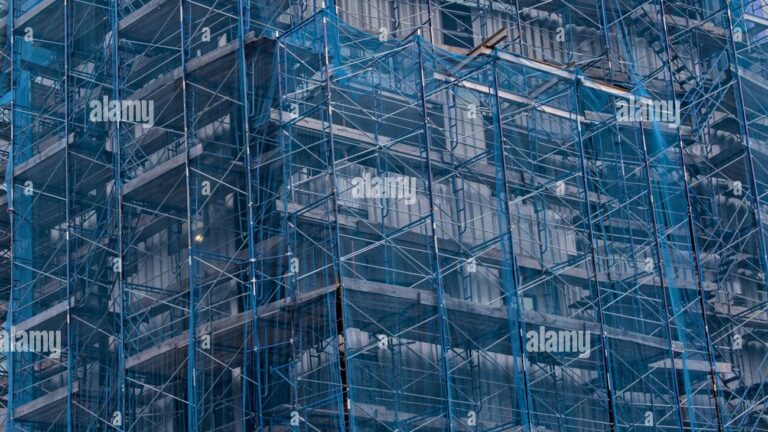Construction sites are inherently hazardous environments, where workers face numerous risks daily. To mitigate these dangers, various safety measures are implemented, with site mesh and scaffold netting being two of the most effective solutions. This article explores how these materials enhance safety on construction sites, protecting both workers and the general public.
The Importance of Safety in Construction
Construction is one of the most dangerous industries, with a high incidence of accidents and injuries. According to statistics, thousands of workers are injured each year, and many fatalities occur due to falls, equipment mishaps, and other hazards. Therefore, ensuring safety is not just a regulatory requirement; it is a moral obligation for employersUltimately, investing in site mesh and scaffold netting is not just a matter of compliance; it is a commitment to the well-being of workers and the community. As the construction industry continues to evolve, embracing innovative safety solutions will be essential in building a safer future for all.
Implementing robust safety measures can significantly reduce the risk of accidents. Among these measures, the use of site mesh and scaffold netting plays a crucial role. These materials not only protect workers but also safeguard pedestrians and nearby properties from potential hazards.

Understanding Site Mesh
Site mesh is a type of protective netting used on construction sites to create a barrier against falling debris. Typically made from high-density polyethylene or polypropylene, site mesh is lightweight yet durable, making it an ideal choice for various construction applications.
One of the primary functions of site mesh is to prevent materials from falling off scaffolding or buildings during construction. This is particularly important in urban areas where pedestrians and vehicles are in close proximity to construction activities. By containing debris, site mesh helps to avoid accidents and injuries, thereby enhancing overall site safety.Learn more about pedestrians at https://ugc.berkeley.edu/background-content/productivity-biomass/
Benefits of Site Mesh
The advantages of using site mesh extend beyond just safety. Firstly, it contributes to a cleaner work environment by preventing debris from scattering across the site. This not only improves visibility but also reduces the risk of tripping hazards for workers.
Moreover, site mesh can be customised to fit the specific needs of a project. Different colours and designs are available, allowing construction companies to maintain a professional appearance while promoting safety. Additionally, site mesh can serve as a branding tool, displaying company logos or safety messages that reinforce the commitment to safety.
Furthermore, the installation of site mesh can enhance the overall efficiency of a construction project. By minimising the risk of accidents, workers can focus more on their tasks without the constant worry of falling debris. This not only boosts morale but also contributes to a more productive work environment. In addition, the presence of site mesh can deter unauthorised access to construction sites, further protecting both workers and the public from potential dangers associated with construction activities.
Another significant aspect of site mesh is its role in environmental protection. By containing dust and debris, it helps to minimise the impact of construction work on the surrounding area, which is particularly vital in densely populated regions. This not only aids in maintaining a cleaner environment but also fosters goodwill within the community, as residents appreciate the efforts made to mitigate disruption and maintain safety standards during construction projects. Click here to learn more about mitigate.
The Role of Scaffold Netting
Scaffold netting is another essential safety feature in construction. It is often used in conjunction with scaffolding to provide additional protection for workers and the public. Made from similar materials as site mesh, scaffold netting is designed to withstand harsh weather conditions and heavy impacts.
How Scaffold Netting Enhances Safety
One of the primary roles of scaffold netting is to prevent tools and materials from falling during construction activities. This is particularly crucial when working at height, where the risk of falling objects is significantly heightened. By using scaffold netting, construction companies can create a secure perimeter around the work area, reducing the likelihood of accidents.

In addition to protecting against falling objects, scaffold netting also acts as a barrier against wind and rain. This can be particularly beneficial during adverse weather conditions, as it helps to stabilise the work environment and maintain productivity. Furthermore, scaffold netting can reduce noise pollution, creating a more pleasant atmosphere for both workers and nearby residents.
Compliance with Safety Regulations
Adhering to safety regulations is a critical aspect of construction management. Both site mesh and scaffold netting contribute to compliance with health and safety standards set by regulatory bodies. By implementing these safety measures, construction companies demonstrate their commitment to protecting their workers and the public.
Failure to comply with safety regulations can result in severe consequences, including fines, project delays, and damage to a company’s reputation. Therefore, investing in quality site mesh and scaffold netting is not just a safety measure; it is a strategic business decision that can have long-term benefits.
Choosing the Right Materials
When selecting site mesh and scaffold netting, it is essential to consider several factors to ensure optimal safety and performance. Quality should be the top priority, as substandard materials may not provide the necessary protection.
Material Quality and Durability
High-quality materials are crucial for both site mesh and scaffold netting. Look for products that are UV resistant and designed to withstand harsh weather conditions. This ensures that the netting will maintain its integrity over time, providing consistent protection throughout the duration of the project.
Moreover, consider the weight and tensile strength of the materials. Heavier netting may offer better protection against falling objects, while lighter options can be easier to handle and install. Striking the right balance between durability and manageability is key to an effective safety solution.
Installation and Maintenance
Proper installation is vital for the effectiveness of site mesh and scaffold netting. It is advisable to engage experienced professionals who understand the specific requirements of the project. Correct installation ensures that the netting is securely fastened and positioned to provide maximum protection.
Regular maintenance checks are also essential. Over time, wear and tear can compromise the integrity of the netting. Conducting routine inspections allows for early identification of any damage, ensuring that repairs or replacements can be made promptly. This proactive approach helps maintain a safe working environment.
Training and Awareness
While site mesh and scaffold netting significantly enhance safety, they are not a substitute for proper training and awareness among workers. It is essential to educate employees about the importance of these safety measures and how to use them effectively.
Safety Training Programs
Implementing comprehensive safety training programs is crucial for fostering a culture of safety on construction sites. These programs should cover the proper use of site mesh and scaffold netting, as well as general safety practices. Workers should be encouraged to report any safety concerns or potential hazards, creating an environment where safety is a shared responsibility.
Additionally, regular refresher courses can help keep safety at the forefront of workers’ minds. By continually reinforcing the importance of safety measures, construction companies can reduce the likelihood of accidents and injuries.
Promoting a Safety Culture
Creating a culture of safety within a construction company goes beyond training. It involves active engagement from management and a commitment to prioritising safety in every aspect of operations. This includes regular safety meetings, open communication channels, and recognition of safe practices among workers.
When employees feel valued and supported in their safety efforts, they are more likely to adhere to safety protocols and take ownership of their well-being. This collective approach to safety can lead to a significant reduction in accidents and create a more productive work environment.
Conclusion
Site mesh and scaffold netting are indispensable tools in enhancing safety on construction sites. By preventing falling debris, protecting workers, and ensuring compliance with safety regulations, these materials play a vital role in creating a safer working environment.
However, the effectiveness of these safety measures relies on the quality of materials, proper installation, and ongoing training. By prioritising safety and fostering a culture of awareness, construction companies can significantly reduce the risks associated with their operations.
Other resources: The Role of Scaffold Shade Cloth in Protecting Workers and Materials

